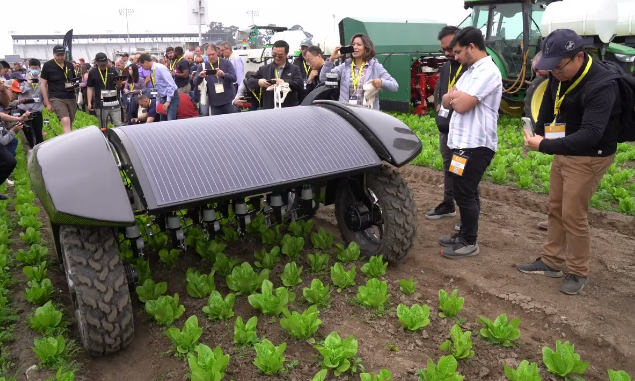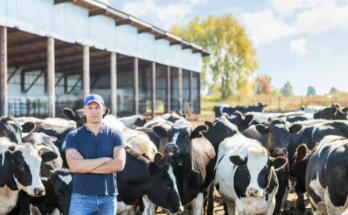The WeedSpider is the latest product from the SeedSpider Inc research and development team. This solution can be configured to efficiently and accurately mechanically weed, mechanically thin, or precision spray commercial vegetable crops. Flexible in its options, the system can be supplied as either a tractor mounted system, enabling growers to utilize their existing infrastructure to minimize costs, or an autonomous robotic weeder, which does not require a tractor or labor and can be provided as a stand-alone system.

**WeedSpider by SeedSpider: Revolutionizing Weed Control with Robotics**
The **WeedSpider**, developed by **SeedSpider**, is an innovative robotic system designed to tackle one of the most persistent challenges in modern farming: weed management. Using advanced robotics, AI, and precision farming technology, the WeedSpider provides a sustainable, cost-effective, and efficient solution for weed control across various crops, including row crops like vegetables, grains, and fruit orchards. This system is a game-changer for farmers who seek to reduce chemical pesticide use, lower labor costs, and improve crop yield quality, all while promoting environmental sustainability.
**How the WeedSpider Works**
The WeedSpider is an autonomous robot equipped with high-precision sensors, cameras, and AI-powered algorithms. It moves through the fields with remarkable accuracy, identifying weeds and distinguishing them from crops based on visual cues such as shape, color, and growth patterns. Once it detects weeds, the WeedSpider can remove them either by mechanical means, such as using rotating brushes, or by delivering precise doses of herbicide directly to the weeds, minimizing chemical runoff and targeting only the undesired plants. This level of precision makes it far more effective and environmentally friendly compared to traditional broad-spectrum herbicide applications.
The robot operates autonomously, reducing the need for human labor in weed control. Its sensors allow it to navigate complex terrain, and it can be programmed to work during optimal times of the day or night, depending on the needs of the farm. Additionally, the WeedSpider can be scaled up for large fields or used in smaller, more specific sections of a farm, providing flexibility to farmers with diverse land types.
**Budget, Spending, and Release Date for WeedSpider Technology**
Developing and implementing robotic technologies like WeedSpider requires significant financial investment, particularly in research and development, testing, and production. The budget for these kinds of innovations often comes from a combination of private investments, grants, and government support. In many countries, agricultural technology is a priority area for funding, with governments offering subsidies and grants to promote sustainability and innovation in farming practices. Programs from organizations such as the U.S. Department of Agriculture (USDA) or agricultural innovation funds in the EU often allocate specific budgets for projects that incorporate cutting-edge technology like WeedSpider.
The **release date of the funding** is crucial for ensuring that farmers can access these technologies. Once the necessary budgets are released, manufacturers can continue to refine the technology and make it commercially available. Farmers who adopt the WeedSpider can benefit from government-backed programs that subsidize part of the cost or offer financial assistance for purchasing new equipment. These funds help offset the initial investment needed to integrate robotic systems into existing operations.
**Success of WeedSpider and Its Impact on Farmers**
The **success of WeedSpider** is measured by its ability to improve efficiency, reduce costs, and increase farm productivity. By automating the weed control process, farmers can save both time and money, reducing the need for manual labor or expensive herbicides. Moreover, the targeted application of herbicides reduces environmental damage, preserves biodiversity, and meets increasing consumer demand for sustainably grown food. Farmers can also enjoy improved crop yields, as their plants face less competition from weeds for water, nutrients, and sunlight.
Additionally, the use of autonomous robots like WeedSpider provides farmers with more precise data about field conditions. By continuously collecting and analyzing information, the WeedSpider helps farmers make data-driven decisions that further optimize crop health and farm operations. This leads to better long-term planning and more sustainable farming practices.
**Resources for Farmers and Support Available**
Farmers interested in adopting the WeedSpider can access a variety of resources to help with implementation. Government programs often provide grants and low-interest loans to support the integration of robotics and technology into farming. Agricultural extension services and industry associations also offer training, technical support, and advice on best practices for using new technologies like the WeedSpider. Many technology companies, including SeedSpider, offer customer support and guidance to ensure that farmers can maximize the benefits of these tools on their land.
Farmers can also benefit from pilot programs or demonstrations of the WeedSpider, which allow them to test the system before committing to a full purchase. Additionally, some agricultural cooperatives and technology hubs offer collective purchasing programs, where multiple farmers can join together to invest in robotic technology at a reduced cost.
In conclusion, the WeedSpider by SeedSpider represents a significant advancement in the field of precision agriculture. With its ability to efficiently manage weeds, reduce chemical usage, and lower labor costs, it holds great potential to revolutionize the way farms operate. With appropriate government funding, industry support, and farmer adoption, the WeedSpider is poised to become an essential tool for modern, sustainable farming.



